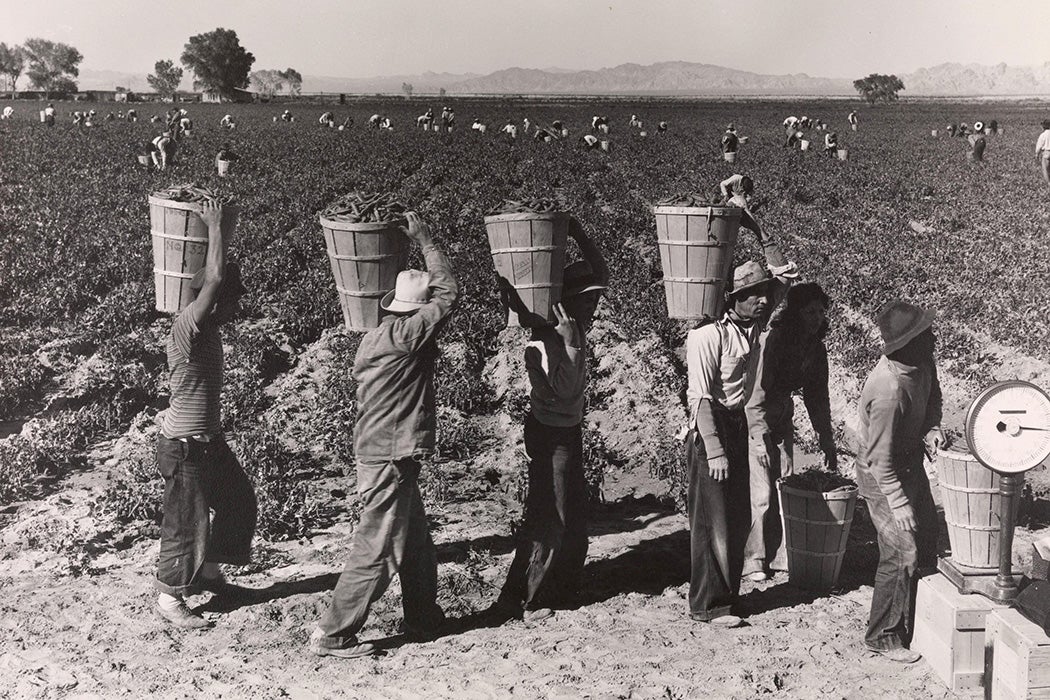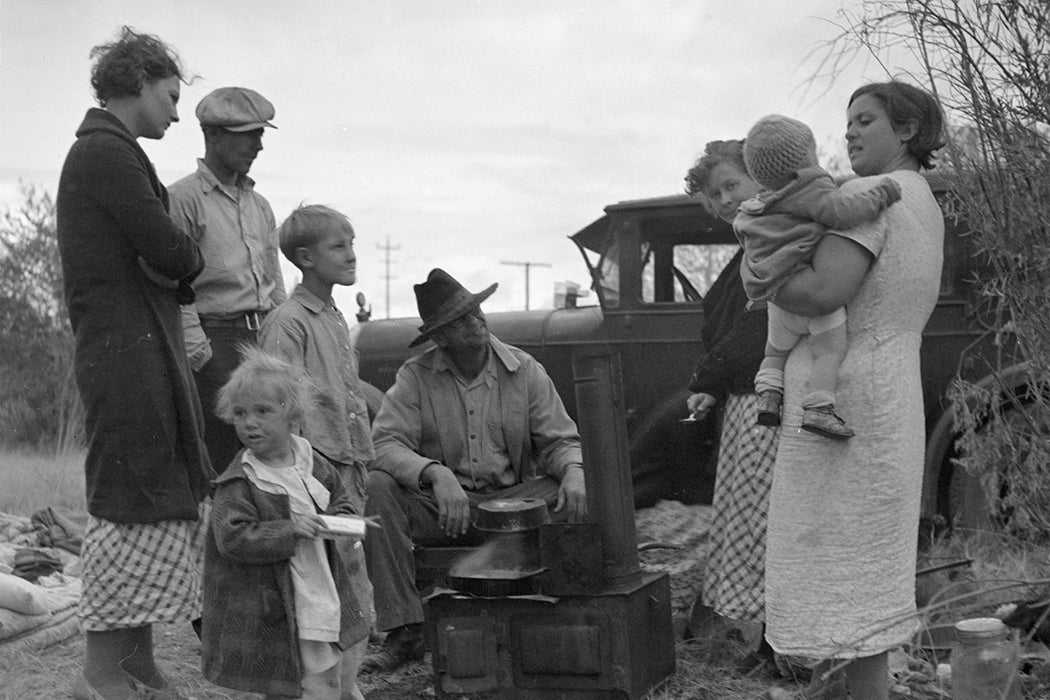Recently, there’s been talk about reviving the Federal Writers’ Project (FWP), a Depression-era government program that employed the era’s out-of-work writers. The original FWP saw the hiring of thousands of writers who produced guidebooks, oral histories, children’s books, and more.
Photographers were also doing important government-sponsored work at the same time. As photographer and historian Michael L. Carlebach explains, the photography program sponsored by the Farm Security Administration (FSA) “was the first attempt by the federal government to provide a broad visual record of American society.”

From 1935 to 1944, the FSA employed photographers to take images of the United States. It wasn’t as much about art as it was a political project, according to Carlebach. The FSA images “were intended to persuade Americans that changes needed to be made in the agricultural sector, and that New Deal programs were effective,” he writes.
The program was led by Roy Stryker, who was head of the FSA’s Historical Section. In Carlebach’s words, Stryker hired photographers to capture “images that explained America to Americans at the same time that they raised public and Congressional support for FDR’s most controversial farm programs.” The program employed photographers who are now well known—Dorothea Lange, Walker Evans, and Gordon Parks among them—each taking photos that even Stryker couldn’t have imagined. “I expected competence,” he said in an interview. “I did not expect to be shocked at what began to come across my desk…. Every day was for me an education and a revelation.”

Crossing the country with cameras in hand, the photographers took now-iconic images of landscapes, farmers, migrant workers, and sharecroppers in rural America. Later, their purview would expand to include urban areas and the lead-up to World War II.
But despite being impressed by the photos, Stryker was also a harsh critic. He was responsible for giving the final yes or no on the images, and rather than simply saying no to a photograph, he punched a hole through the negative. As contemporary art scholar Andrew Stefan Weiner writes, “it is estimated that nearly half of the negatives shot by FSA photographers were cancelled” this way. But the many that remained did their job. As Carlebach writes, the images were in high demand, and “via the wire services, magazine articles, traveling exhibitions, and government brochures and handouts, the public began to respond favorably to the photographs and, more importantly, to express their support for at least some of the programs.”

As Weiner points out, the FSA photos are “the best-known images of US poverty,” and they can serve as a powerful model of “how public policy is mediated through representation and perception.” But even while the FSA was running the photography program, that representation was carefully monitored. Though Stryker warned photographers not to manipulate the subjects or the images for the sake of drama, he recognized the program’s aims. “My sense of PR…grew rapidly. And we were succeeding with our pictures…to a surprising degree,” he wrote in a letter.
Weekly Newsletter
At the time, the program faced charges that it was simply propaganda for the New Deal. Carlebach acknowledges this but also explains, “the use of photographs to educate and persuade in no way alters their documentary value, nor does such use taint their truthfulness.”
Support JSTOR Daily! Join our new membership program on Patreon today.







